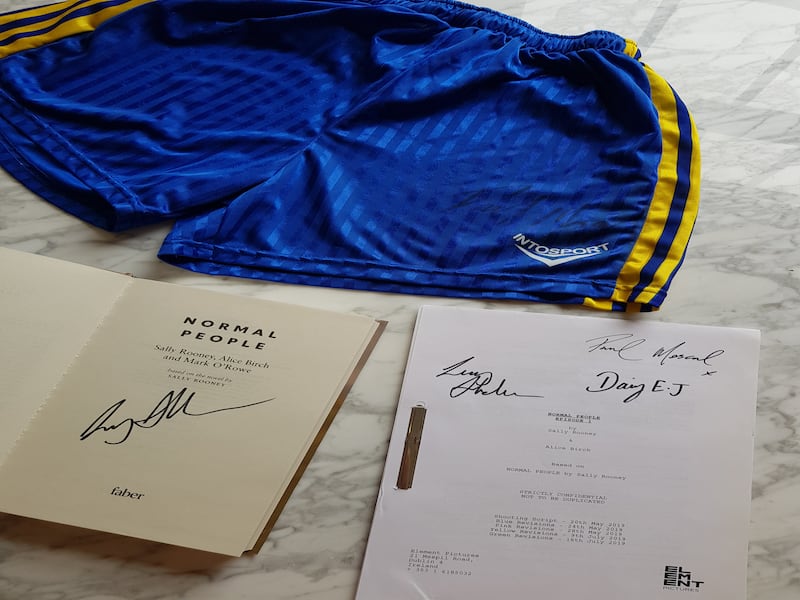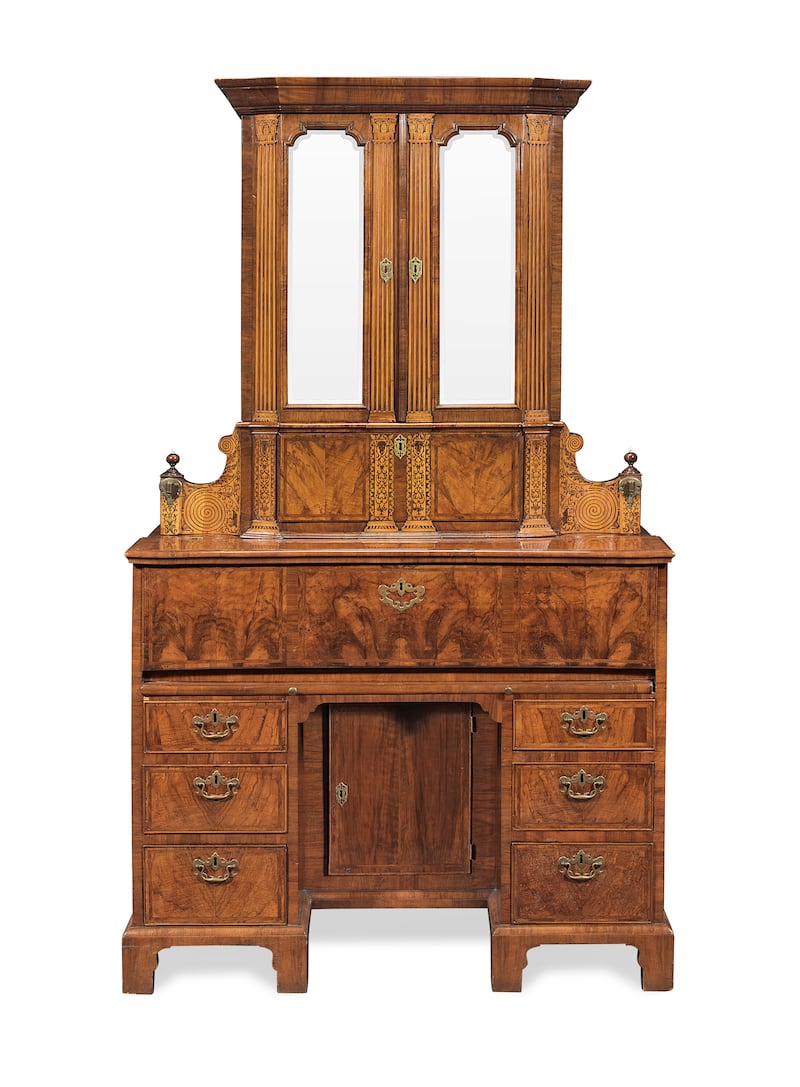A growing movement of conscious consumerism, accelerated by the pandemic, has propelled “preloved” or vintage fashion from niche to mainstream. International ecommerce site eBay recorded a 1,404 per cent increase in preloved items sold in 2020 compared with 2018.
But while fashion conscious individuals are opting for second-hand clothes, the market for collectable clothing is nothing new.

An online auction of some film props from the highly successful adaptation of Sally Rooney’s novel Normal People will go under the hammer in a commission-free Sean Eacrett online sale ending on July 17th.
Causing a bit of hype are the GAA shorts worn by Connell, played by Paul Mescal, who has also autographed the shorts.
Jack Horgan-Jones: Can Jim O’Callaghan live up to his brand as the law and order politician?
The New Nuclear Age by Ankit Panda: Could ‘growing loose talk’ lead to the ultimate disaster?
Pamela Anderson: ‘I felt like life was really like death for me’
Jamie Dornan: ‘I lost my mom, and I lost four of my best friends in an accident. I had a difficult few years’
As part of a campaign organised by a group of independent Irish film-makers (Film-makers supporting Film-makers), Element Pictures and Oscar-nominated director Lenny Abrahamson have donated the signed GAA shorts, along with a signed script of the first episode and signed hardback book of scripts, featuring photography by Enda Bowe, from the multi-award-winning series, to an auction in support of film-makers affected by the war in Ukraine.
The distinctive blue and yellow shorts, colours of Clare, Tipperary, Roscommon and Ukraine, brought Gaelic football to a wider audience. The hype generated by the series, which was the BBC’s most-streamed show in 2020, with almost 63 million viewers, saw Italian fashion house Gucci cash in on the look, with the release a pair of €550 shorts that were remarkably similar to the O’Neill’s pair worn by Mescal.
World records
Diego Maradona’s light blue Argentina “hand-of-God” shirt, worn by the player during the 1986 World Cup quarter-final match against England, in a game that became famous for the hand-of-God moment, broke two records at auction in May this year.
The shirt achieved over £7 million (€8 million), making it the most expensive football/soccer shirt sold at auction as well as the most expensive sports memorabilia ever sold at auction.
Owned for the past 35 years by Steve Hodge, the English midfielder who unintentionally flicked the ball to Maradona for the handball goal, it had been on display for the past two decades at the National Football Museum in Manchester, until going under the hammer at Sotheby’s to an undisclosed buyer.
Other items of collectable clothing to have achieved remarkable sums at auction in the past include the Jean-Louis-designed dress worn by Marilyn Monroe the night of John F Kennedy’s 45th birthday in 1962. Ripley’s Believe it or Not, the franchising company that deals in bizarre items and events, paid over $5m (€4.87m) after fees for the provocative flesh-coloured gown.
The see-through gown worn by Kate Middleton for a fashion show, an item that cost £30 to make, achieved £78,000 (€91,000), while the frock her late mother-in-law Princess Diana wore while dancing with John Travolta in the White House sold for £264,000 (€307,998) in 2019.

In other news, an important Irish George I walnut and feather-banded sycamore, cedar and marquetry “architectural” secretaire cabinet will be auctioned by Bonham’s in its Decorative Arts sale on July 13th.
At almost 300 years old, as it dates from circa 1725, it is thought to be by John Kirkhoffer. The son of a German Palatine called Franz Ludwig, who arrived in Ireland as a refugee in 1709 after escaping the Rhineland Palatinate area, which was subject to conflict for many years, the family settled in Kerry and Limerick before moving in Dublin.
Listed with a £30,000-£40,000 estimate, it is one of an important group of four similar walnut and marquetry secretaire cabinets from that time that features in the seminal work Irish Furniture (2007) by D Fitzgerald, Knight of Glin and J Peill, who assert that it is of Irish origin.
While one of the four is in the Art Institute of Chicago, it was also thought that one of these cabinets had been in the possession of poet and satirist Jonathan Swift, author of Gulliver’s’ Travels, who became dean of St Patrick’s Cathedral.
That model has been in the Victoria and Albert Museum since 1912, and has been attributed as being the “property of Dean Swift”, as an inscription in one of the drawers was thought to have read, “Mrs McAndrews ... Mr Swift’s House”. But in 2012, new technology using infrared photography revealed that it actually read “Mrs McAndrews ... The Sugar House”.
So the museum may have had it wrong for almost a century but at the time the piece was crafted the satirist wrote a pamphlet entitled “Proposal for the Universal Use of Irish Manufacture in Cloaths [sic] and Furniture of Houses ... Utterly Rejecting and Renouncing Everything Wearable that Comes from England”. It appears that the revered essayist was the first to initiate a buy-Irish campaign more than 300 years ago.
















